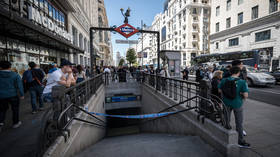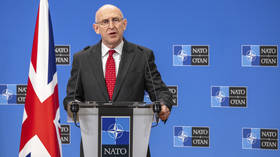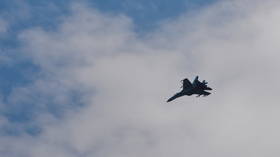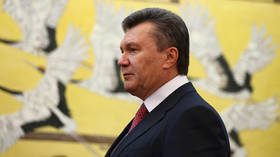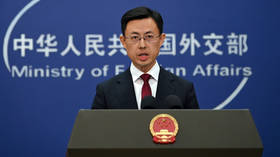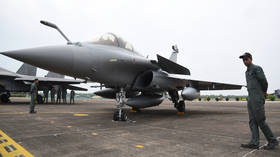Russia’s Black Sea Fleet: to flee of not to flee?
Ukrainian and Russian delegations are set to discuss Russia's naval base post-2017 in the Crimea. Tension between the countries increased following last month's armed conflict over South Ossetia.
The Russian Black Sea Fleet issue is a stumbling block between Russia and Ukraine, as well as a vital factor for Ukraine’s independence and NATO membership prospects.
Integral part of Russia’s military for centuries
Following the capture of the Crimean peninsula in 1771 by the Russian army, which dealt a crushing blow to the Tatar army in the process, Russia’s vessels settled in the Black Sea for the first time.
Even since then Russia has always put the infrastructure of the Crimea ahead of territorial claims.
The town of Kherson and the first ship docks were set up in 1778, while Crimea officially became a part of the Russian Empire by a Ekaterina II decree only in 1783.
The fortress of Sevastopol was built in a year and by 1785 Russia’s Black Sea fleet was established.
It took part in all of the subsequent Russo-Turkish wars, as well as the war with France, becoming instrumental for Russia’s military achievements in Europe.
However in 1850s Russia suffered a deafening defeat in the Crimean war and was prohibited to have navy in the Black Sea till 1871. Immediately after that Russia started the transition of the fleet to steamboats.
During the Civil War which followed the Bolshevik Revolution, most of the fleet was lost or interned by the Western Allies and the Soviet Union started a huge rebuilding project in 1930s.
The rebuilding bore fruit as early as during the WWII, at the end of which dozens of ships were awarded with State Awards.
Unhappily ever after
With the collapse of the Soviet Union the Black Sea Fleet was weakened by funding cuts and the fact that a part of the ships passed under Ukrainian jurisdiction along with the coastal facilities.
To further complicate matters Crimea proclaimed self-government in May 1992, making the Black Sea Fleet issue critical for Ukraine’s independence.
The Crimean leadership was persuaded to remain a part of newly-independent Ukraine, meanwhile an interim agreement brought a joint Russo-Ukrainian fleet to life.
It existed until May 28, 1997, when the Treaty of Friendship, Co-operation, and Partnership on friendship and division of the Black Sea Fleet were signed on. According to this documents Russia recognized Ukraine's sovereignty over the Crimea and Sevastopol, while Russia’s Black Sea Fleet (80% of the Soviet one) is to stay in the Crimea until May 28, 2017.
Tensions eased somewhat, but didn’t cease to exist completely, with Ukraine eventually declaring that the far from perfect treaty – minor details of it are still causing controversies today – will not be extended.
Russia's naval base in Sevastopol currently boasts some 50 sea vessels and 80 aircrafts.
Tensions rise
With Viktor Yushchenko’s controversial rise to power and the establishment of a fragile political system in Ukraine, the new president named the Black Sea Fleet issue among three key problems of Russo-Ukrainian strategic relations, along with border disputes and energy cooperation.
After several Black Sea Fleet warships dropped anchor off the Georgian coast during August’s Georgian-South Ossetian conflict, the Ukrainian leadership made steps to make the conditions for the Russian fleet less comfortable.
First a decree to introduce ‘a permissive mechanism’ for crossing the Ukrainian border by Russia’s Black Sea Fleet was signed. The decree announces that the fleet must inform the Ukrainian General Staff no later than 72 hours before the prospective crossing of the country’s border.
Russia’s President Dmitry Medvedev responded by stating that ‘Russia needs no instructions on the Black Sea Fleet’.
Then a 25-fold increase of rent for the Russian Fleet from January 1, 2009 was proposed.
The rent price was calculated in 1997 and defined in the treaty of disposition of Russia’s Black Sea Fleet on the territory of Ukraine. The calculations took into consideration the Ukraine’s debt to Russia, which at the time was $US 2 billion, and the cost of renting port facilities was agreed at $US 98 million per year.
After the increase the price might reach as much as $US 1-2.5 billion.
Yushchenko also called for Russia to withdraw its navy from the Sevastopol base early, but this idea didn’t have the backing of Prime Minister Yulia Tymoshenko.
New hope of resolving
On Thursday, delegations from Kiev and Moscow will undergo a new round of talks concerning Russia's Black Sea fleet base in the Crimea.
According to the country’s Foreign Ministry, Ukraine “will draw the attention of the Russian side to the need to follow decrees issued by the Ukrainian president.” They believe that “outside the zone of its temporary deployment, the Russian Black Sea Feet must comply with the existing laws of Ukraine”.
Russia in turn may offer Ukraine several lucrative proposals to convince Kiev to allow Russia's Black Sea Fleet to remain in Sevastopol after 2017, including a contract to build aircraft carriers for the Russian Navy.
Ruben Zarbabyan, RT





